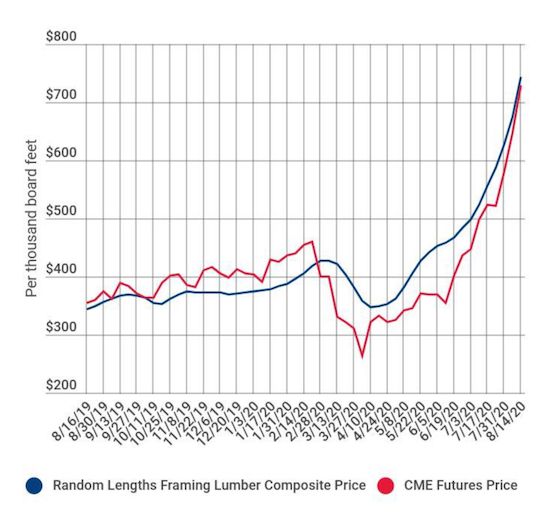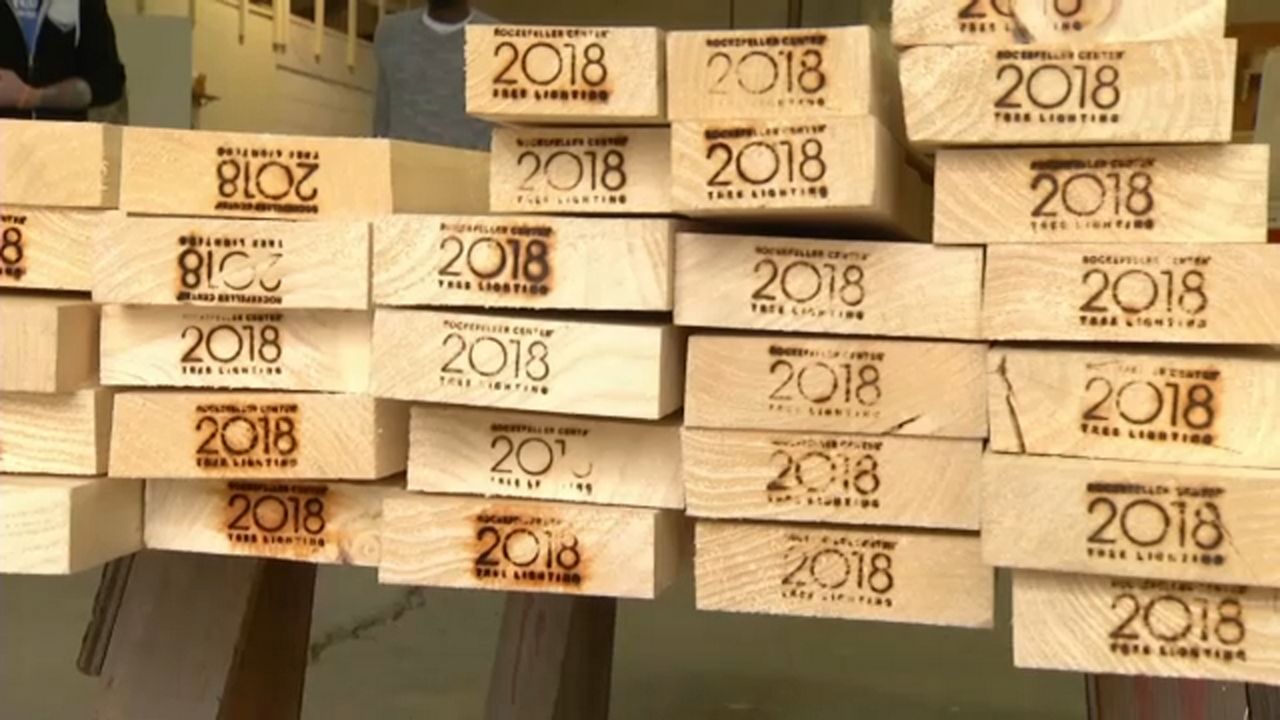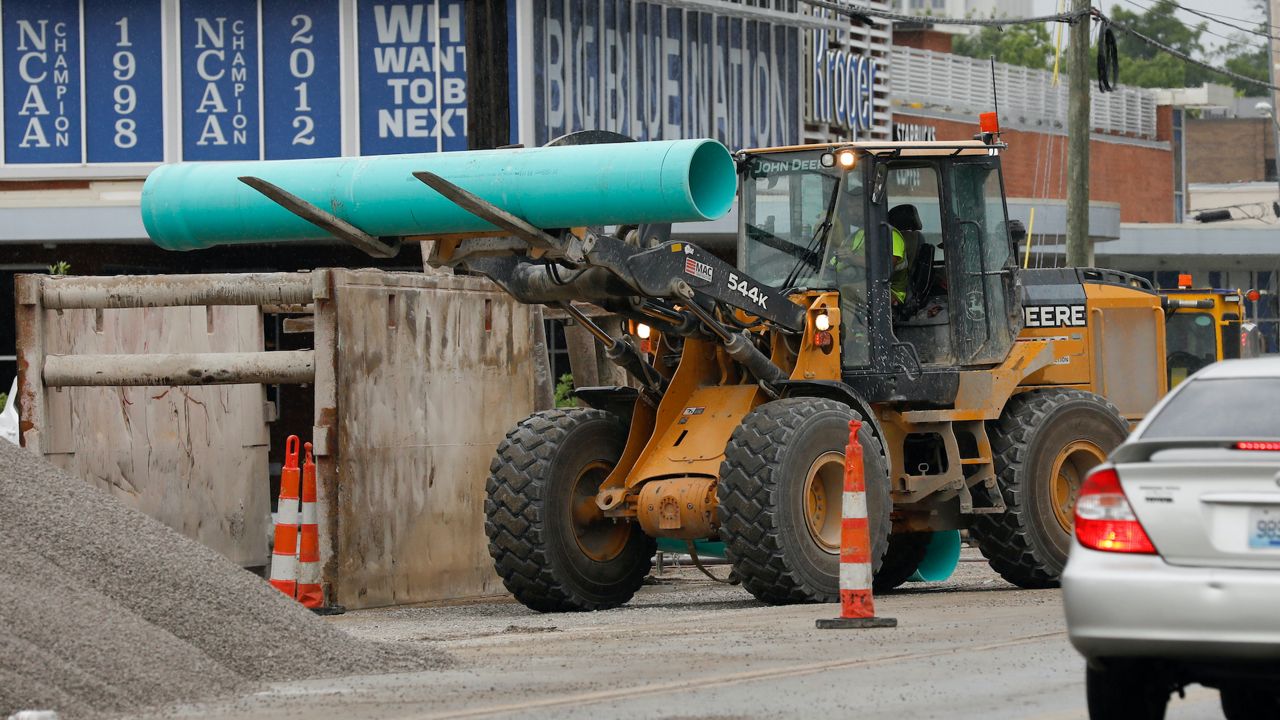LEXINGTON, Ky. – The COVID-19 pandemic continues to wreak havoc on supply-and-demand for certain products, and lumber and other construction materials are no exception.
What You Need To Know
- DIY projects increased during pandemic
- Mills have closed
- Tariffs placed on imported goods
- New construction affected the most
America started the year with lower-than-normal lumber supplies and the pandemic shut down mills and slowed imports. Another fact is the country also lacks certified semi-truck drivers to haul lumber and, at the same time, people are stuck at home and have used that time to build decks, repair fences and start other do-it-yourself projects that require buying lots of construction staples, such as plywood and two-by-fours.
Lumber prices are also very high. The National Association of Homebuilders, or NAHB, reports the price of lumber has increased roughly 80 percent since mid-April to an average price above $600 per thousand board feet. This increase adds thousands of dollars to the cost of a typical newly built home, thereby constraining housing supply, exacerbating affordability woes and limiting housing’s economic impact.
Some markets in recent weeks have seen plywood go from $15 a sheet to $34 a sheet. It’s normal for the price of building supplies to fluctuate, but that kind of spike is unusual, according to the NAHB. The current price increases across the board represent the longest sustained rise in prices many builders have ever experienced.
“We haven't seen it like this before,” said Nick Keitz, owner of Keitz Construction in Lexington and president of the Building Industry Association of Central Kentucky. “I primarily do remodels, so it’s not impacted me like it’s impacting the new construction guys, but it’s an issue for sure and it’s not going away until probably January at the earliest.”
Pressure-treated wood used to build decks, among other things, has been especially scarce as a result of the DIY explosion during the pandemic. Pressure-treated lumber has also increased from around $35 a piece to $65. Home Depot reported its second-quarter sales are up 23 percent and second-quarter revenue at Lowe’s surged 30 percent.
“You can't find treated decking,” Keitz said. “I have a job in Richmond we signed a month ago, and it’s for composite decking. They told me it would be six to eight weeks before they had it in any color – any color you want is going to take a minimum of six weeks. There’s a shortage of that, too.”
Lowe’s CEO Marvin Ellison said it seems people have stopped spending so much on clothes and vacations and are spending on home improvement instead.
“We’ve got tons of anecdotal information where someone was planning to take a vacation and now they’ve decided to remodel the kitchen; where they were planning to take a vacation and they decided to remodel their entire backyard to make it a place where they could spend more time,” Ellison told CNBC.

The price of OSB plywood has increased 31 percent in the last 30 days and 78 percent over the past year. All plywood prices have increased 19 percent in the last 30 days and 61 percent in the past year. Data from Buck Lumber in Charleston, South Carolina, also shows the price of spruce wood has increased 25 percent in the past 30 days and 50 percent over the past year.
There has been disruption in the supply chain aside from shuttered lumber mills and a shortage of certified semi-truck drivers. The pandemic has resulted in some new tariffs on materials imported from overseas, also driving up the price.
Since mid-April 2020, lumber costs for the average single-family home have climbed more than 130 percent, resulting in an increase of more than $16,000 in the price of a new single-family home. And the average cost increase for a new multifamily unit is approximately $6,107, according to NAHB analysis. These sharp increases threaten the affordability of new homes and the housing sector, which is leading the nation’s economic recovery.
“All the new construction guys are booming,” Keitz said. “The problem they're having is they signed these new builds a few months ago and set the date to break ground on them and the lumber prices have changed to the point where it is $10,000 or $15,000-type hit to their bottom line and they’re having to try and wait it out or they're going back and trying to renegotiate the price with their customers, which is always fun.”
The NAHB has called on domestic lumber producers to ramp up production to ease growing shortages and make it a priority to work with Canada on a new softwood lumber agreement that would end tariffs averaging more than 20 percent on Canadian lumber shipments into the United States.
Keitz said shortages, however, are not limited to lumber. New tariffs and pandemic-related guidelines for imported goods are causing kitchen appliances, doors and windows to become more scarce as well.
“I do about a dozen remodel projects at a time, and there’s constantly one ending and one starting,” he said. “There’s a huge appliance shortage because they come from overseas and there are COVID tariff issues. What I've been doing, from the moment I find the kitchen, no matter when our start date is, they’re picking out their cabinets and they’re appliances and I'm ordering the appliances basically as soon as they say this is what I want. It used to be that we’d get going on a kitchen remodel and two weeks before I needed them I’d call and say I need them on a certain day. Now, it takes months to get appliances. Door and windows have also been affected. Tile is taking twice as long to get than it used to. We all will just have to wait this out.”









